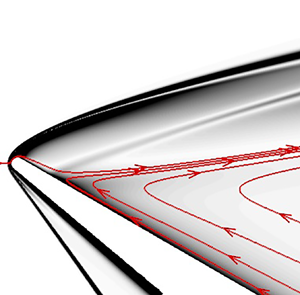No CrossRef data available.
Article contents
Bluntness and incidence effects in hypersonic flows with large separated regions
Published online by Cambridge University Press: 15 August 2022
Abstract

This paper describes a numerical investigation on the effects of small to large bluntness as well as the angle of incidence on the leading-edge separation in a laminar hypersonic flow. The results show that both bluntness and incidence strongly influence separation characteristics. A combined bluntness and incidence parameter is proposed and applied to plateau pressures in the separated region and is shown to demarcate effects of small and large bluntness at different angles of incidence. The investigation also showed profound changes in the internal structure of the separation bubble with changes in incidence and bluntness. The significance of the relationship between the two shear stress minima and the separation length is highlighted.
- Type
- JFM Papers
- Information
- Copyright
- © The Author(s), 2022. Published by Cambridge University Press



